We're constantly working on new features and improvements. Here's what's new with Langdock.
Dec 03, 2025
We've improved how we process PDFs to better handle visual content.

Until now, when you uploaded a PDF to Langdock, we extracted the text from it and sent it to the AI model, and created so-called “embeddings” to enable the model to perform a semantic search on the PDF. This allows the model to generate qualitative responses based on the uploaded file.
To further improve this processing, we now also take screenshots of pages and provide them to the model. In simple terms, this gives the model “eyes”, so you can now ask questions like “Describe the details of the graphic on page 26" and get accurate answers, since the model can now actually "see" the document content. The model now has a new “view page” tool for inspecting pages, which is particularly helpful for images, charts, logos, and other visual elements.
As always, let us know what you think! 🙌
Nov 30, 2025
Anthropic’s Claude Opus 4.5 is now available in Langdock! 🚀
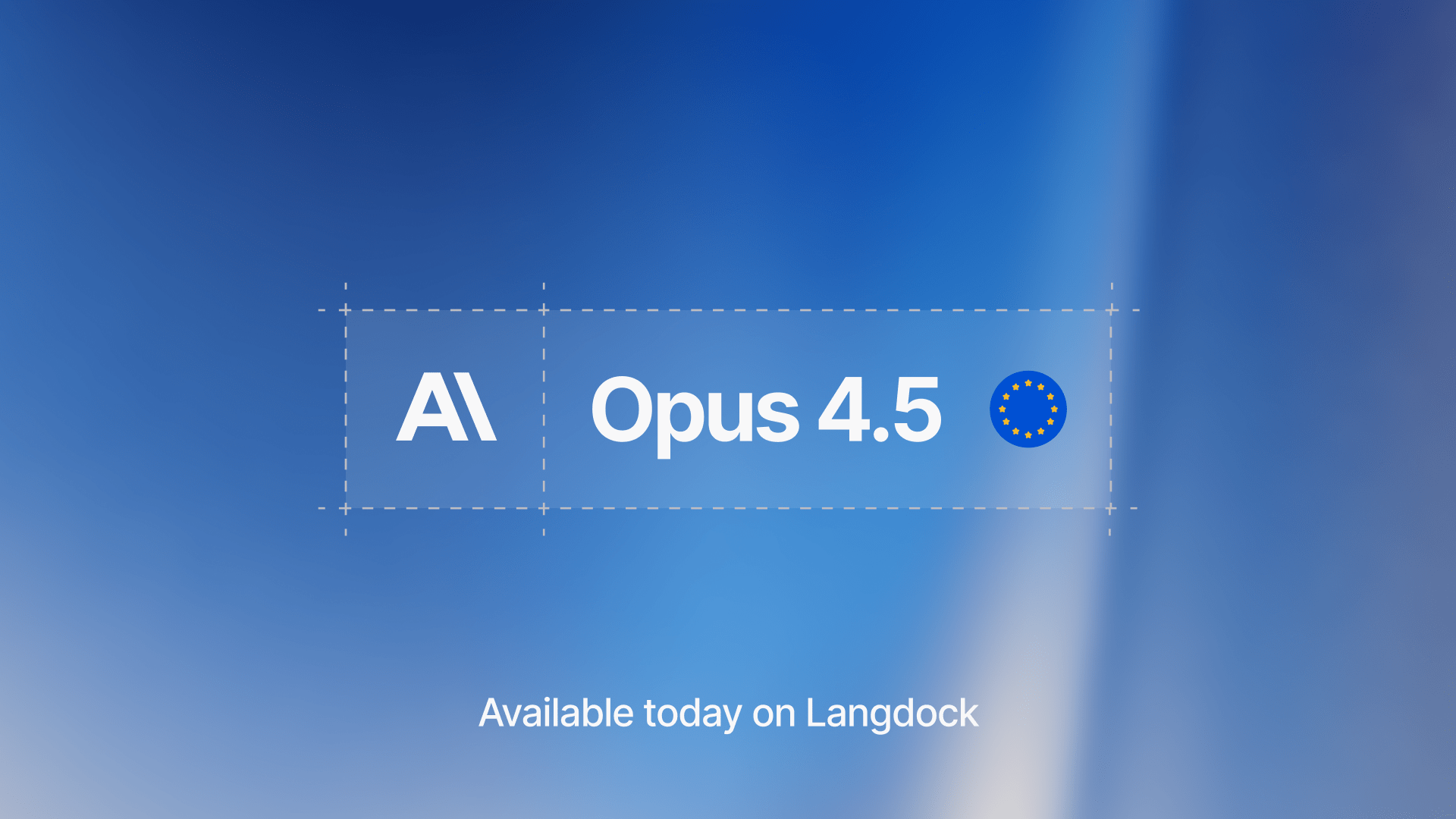
The new model introduces enhanced capabilities for coding, agentic workflows, and handling complex tasks.
Claude Opus 4.5 delivers improvements in reasoning, providing clearer answers with less technical jargon.
You can learn more about the model in Anthropic’s official announcement.
We have automatically enabled Opus 4.5 in all workspaces where Claude Sonnet 4.5 was previously activated.
Like Claude Sonnet 4.5, the model is available in two versions: one with reasoning and one without. This allows you to choose whether you want the model to reason for your current request.
Nov 26, 2025
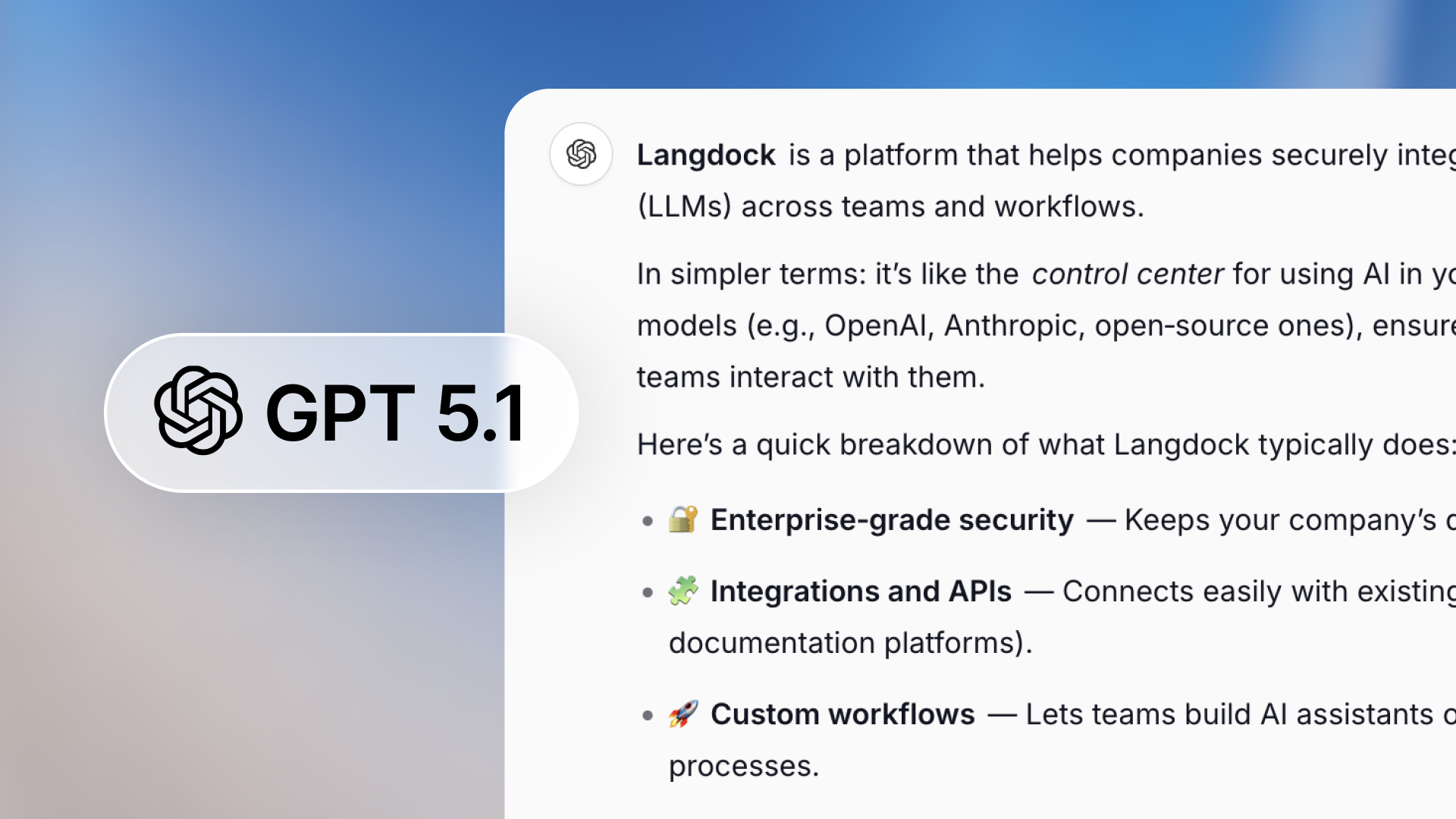
We upgraded GPT-5 and GPT-5.1 to the latest model versions from OpenAI, now featuring a dedicated "Chat" version optimized for conversational interactions.
The new Chat version delivers responses with richer formatting: better structure, clearer lists, and more polished outputs that make conversations easier to follow and act on. These are the same model versions currently used in ChatGPT.
Both GPT-5 and GPT-5.1 "Chat" versions are hosted in the EU. The previous GPT-5 and GPT-5.1 models have been updated and are now live. If you haven't tried out the latest GPT-5 series yet, give it a try!
Nov 17, 2025
We are excited to announce that GPT-5.1 is now available in Langdock! 🚀
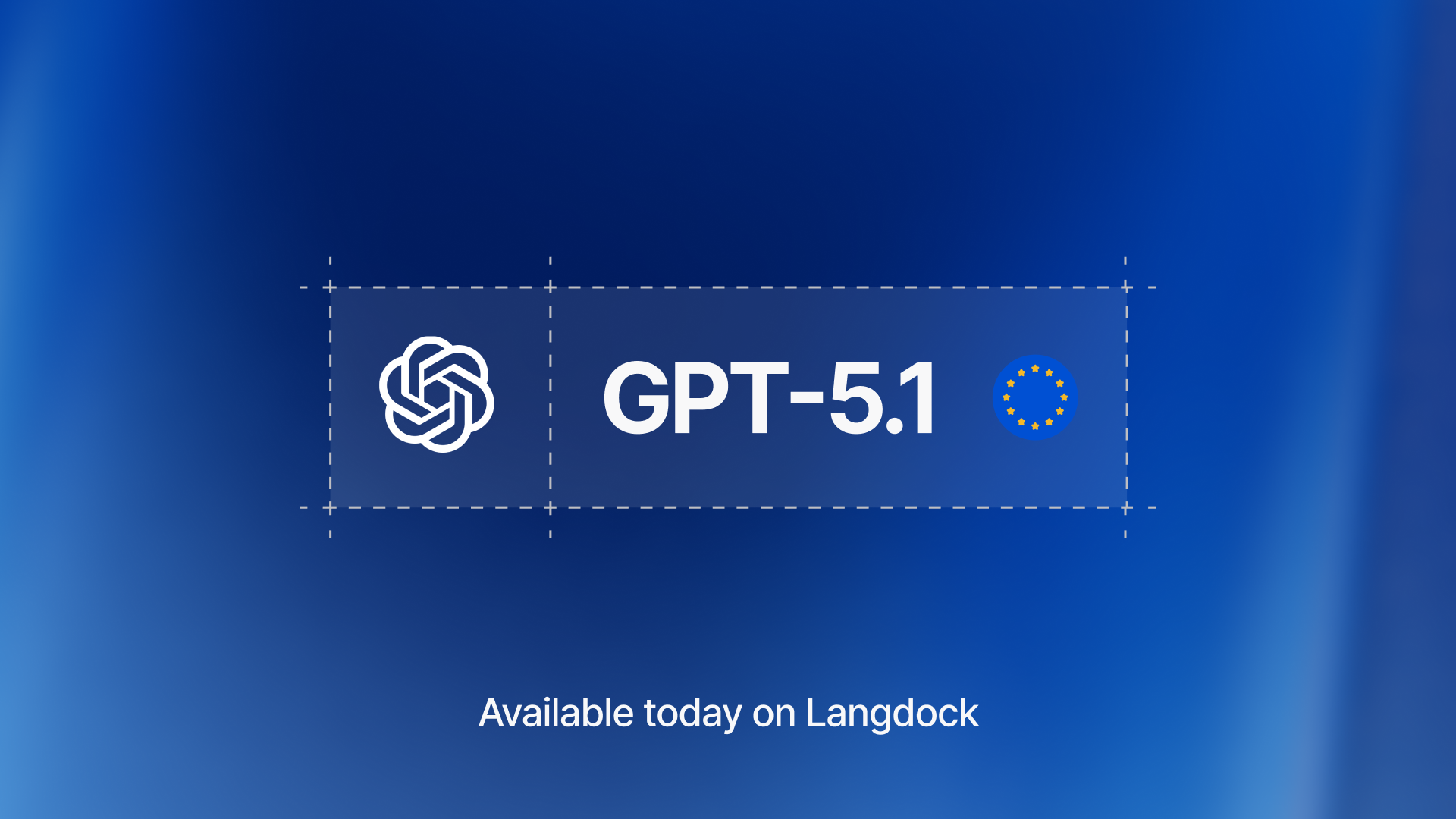
As of today, we are sharing the newest GPT-5 series release: GPT-5.1, available also in thinking mode. This model improves on both intelligence and communication style.
This model is more intelligent, warmer, and better at following instructions than GPT-5. You may notice a more playful tone, paired with well‑structured outputs.
This model is a great choice when you want it to closely follow your guidance and produce polished responses. It has become faster at solving simple tasks, while being more persistent on complex ones. The model generates clearer responses by focusing on less technical jargon.
You can read more about the launch in the announcement from OpenAI.
Like the previous GPT-5 model, the model is available in two modes - one for fast responses (GPT-5.1) and one for reasoning before responding (GPT-5.1 Thinking).
The model is hosted by Microsoft Azure inside the EU and available to all workspaces now.
Nov 13, 2025
We're excited to launch Workflows, a powerful new way to build AI-driven automations in Langdock! 🚀

Workflows bring together everything you already use in Langdock - Chat, Assistants, and Integrations - into end-to-end automations. Think of it as your orchestration layer where you can chain multiple steps together, add conditional logic, loop through data, and create sophisticated processes that run automatically.
Workflows allow you to build complex, multi-step automations without writing code. They can be triggered by a form submission, a schedule, or an event in your connected apps and handle entire processes from start to finish-automatically and reliably.
Key capabilities:
More powerful than Chat: While Chat is perfect for interactive conversations, Workflows automate entire processes in the background. Set them up once, and they run reliably 24/7.
More flexible than Assistants: Assistants are great for specific tasks, but Workflows let you combine multiple assistants, add custom logic, integrate with external APIs, and create sophisticated decision trees.
More than Integrations: Integrations connect your apps, but Workflows orchestrate complex processes across those apps-with AI at every step.
Workflows are available now in Langdock! To start building:
Check out our video tutorial to get started or our documentation for detailed guides.
Important notes:
We're excited to see what you build with Workflows! As always, we look forward to your feedback. 🙌
Oct 30, 2025
We improved group permissions to allow more intuitive sharing and permission handling around prompts, assistants and knowledge folders within your team.

Until now, all group members, editors and admins were able to share prompts, assistants and knowledge folders with the entire group which often led to cluttered groups and unclear governance.
With this update to group role permissions, we reduce clutter in large groups by limiting who can share resources. Moreover, we clearly separate contributing to a group (editor) from managing a group (admin) for cleaner governance.
For more details, also check out our updated documentation page.
Sharing flow: You will still see all your groups when sharing prompts, assistants or knowledge folders. If you're an Editor or Admin, you can share with them. If you're a member, the group will be greyed out with an info message explaining why.
Group members were migrated to editors: Users who were members of a group before the update now have the editor role. Since the new editor role has the same sharing permissions as the old member role, nothing changes for previously shared prompts or assistants.
Admin tools and SCIM defaults: We added admin settings and tools that make syncing SCIM groups with these new permissions much easier:
Please check out our documentation here for more details.
We look forward to hearing your feedback on how these new permission levels improve collaboration in your workspace! 🙌
Oct 23, 2025
We are excited to announce that Gemini 2.5 Flash Image (Nano Banana) is now available in the EU! 🚀
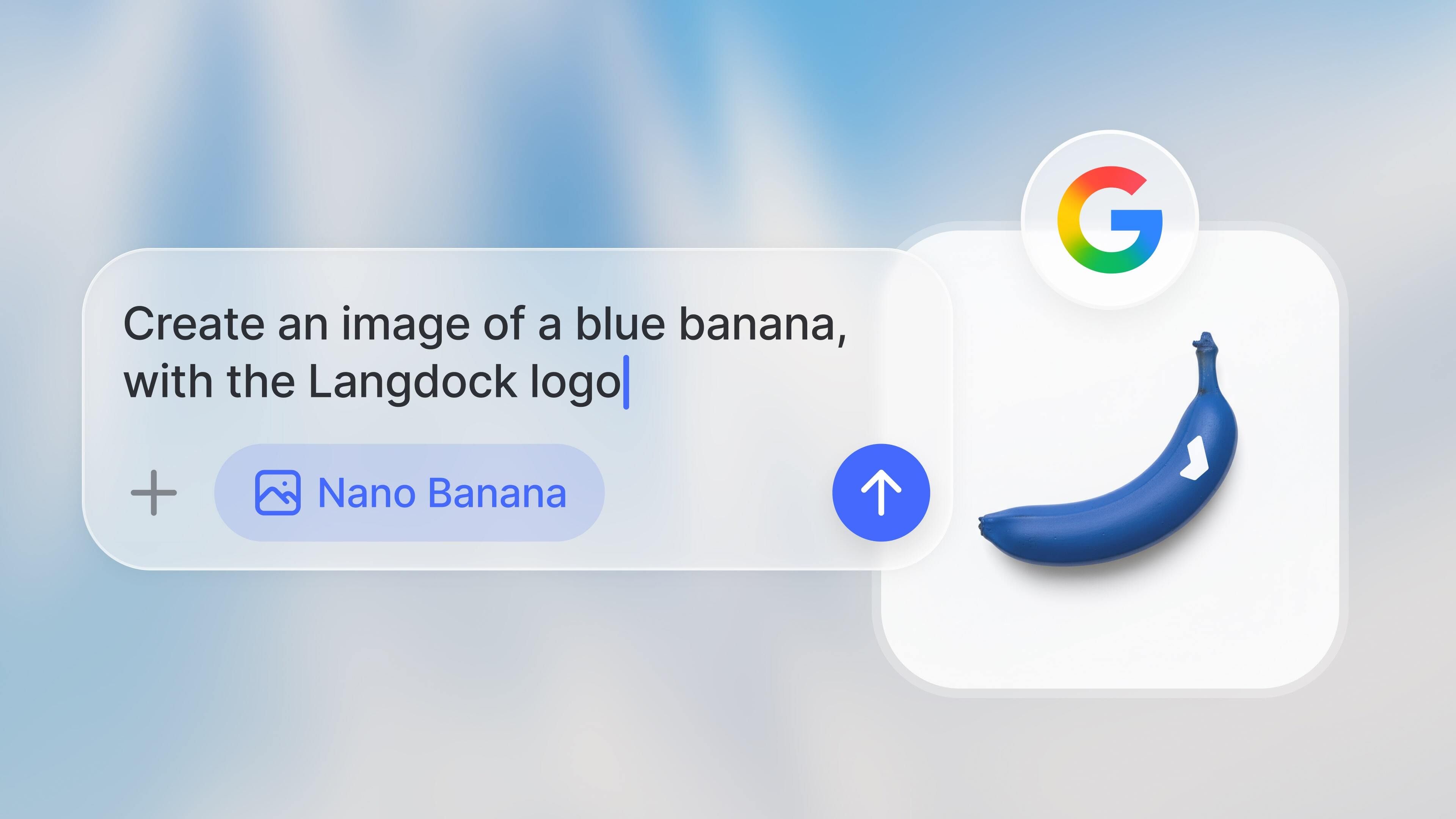
Google's image generation model has been in high demand since its launch. It is one of the best image generation models right now and also supports editing images.
Unfortunately, it was not available in the EU until now. But Google launched the EU-hosted model recently, so we added the model and enabled it as the default image generation for all workspaces.
The most important highlights are:
You can customize your personal default image model at any time in your account settings under Preferences.
The model is now live, and we look forward to your feedback!
Oct 08, 2025
You can now receive important, personalized notifications directly in your inbox, so you never miss an update and always stay on top of what matters.
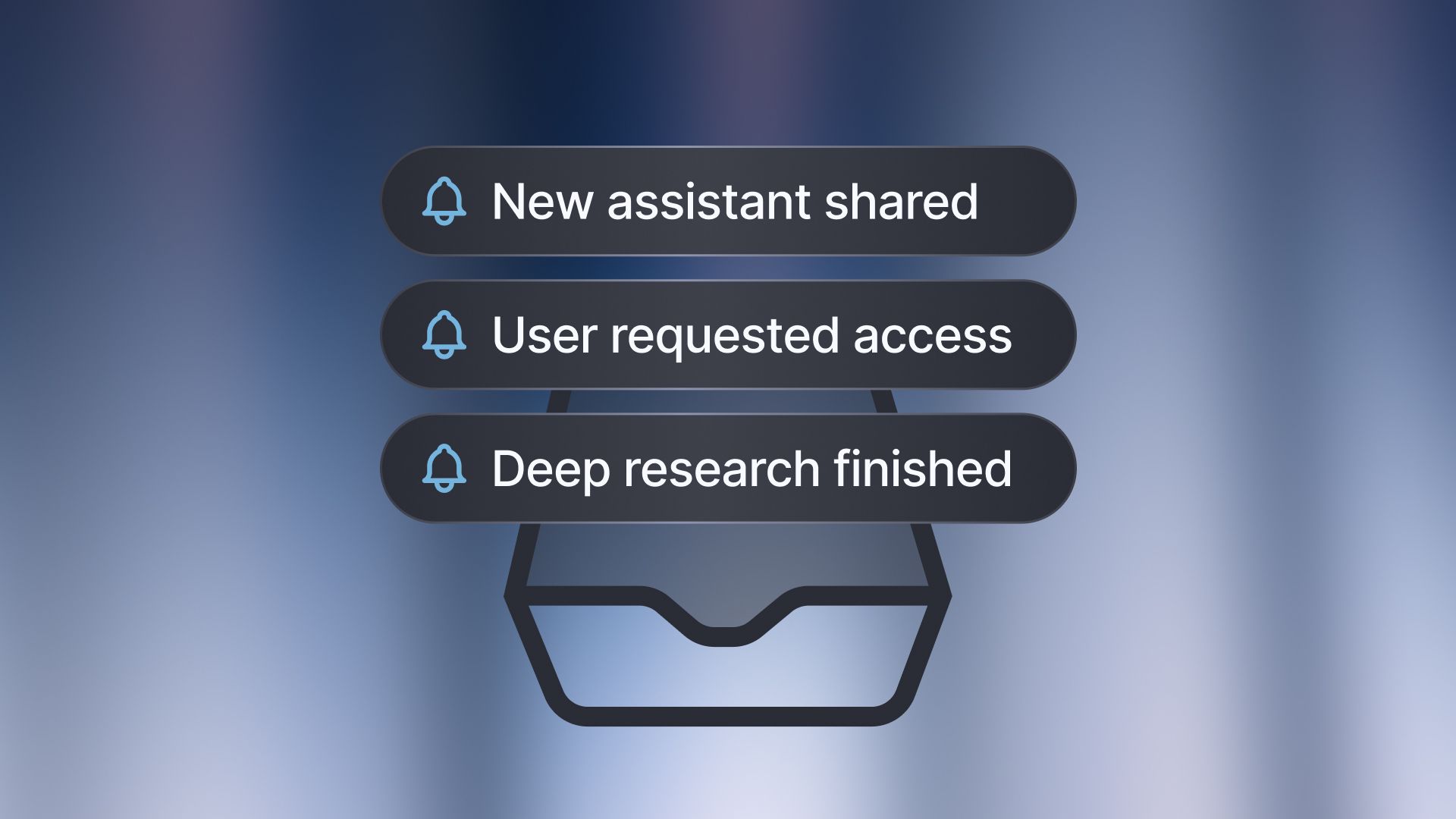
What’s new? The new “inbox notifications” feature delivers relevant updates straight to your inbox. With just one click, you can jump directly to the related request or completed result.
When do you receive notifications?
Assistant shared: When someone shares an assistant with you, you’ll get a notification in your inbox with a link to it and details on your access level. This lets you see what’s available and start right away.
Deep Research completed: For longer Deep Research requests, you’ll be notified as soon as the analysis is complete. Perfect for using your time efficiently while working on other tasks in parallel.
Access request (for admins): When a colleague requests access to Langdock, the request will appear directly in your inbox.
We will add many more inbox notifications in the coming months!
You can find the Inbox in the left sidebar, right below the chat search bar. The number of unread messages is highlighted, so you can easily spot them.
We’re looking forward to your feedback on this new feature!
Oct 02, 2025
A new generation of image generation models is now available in Langdock!
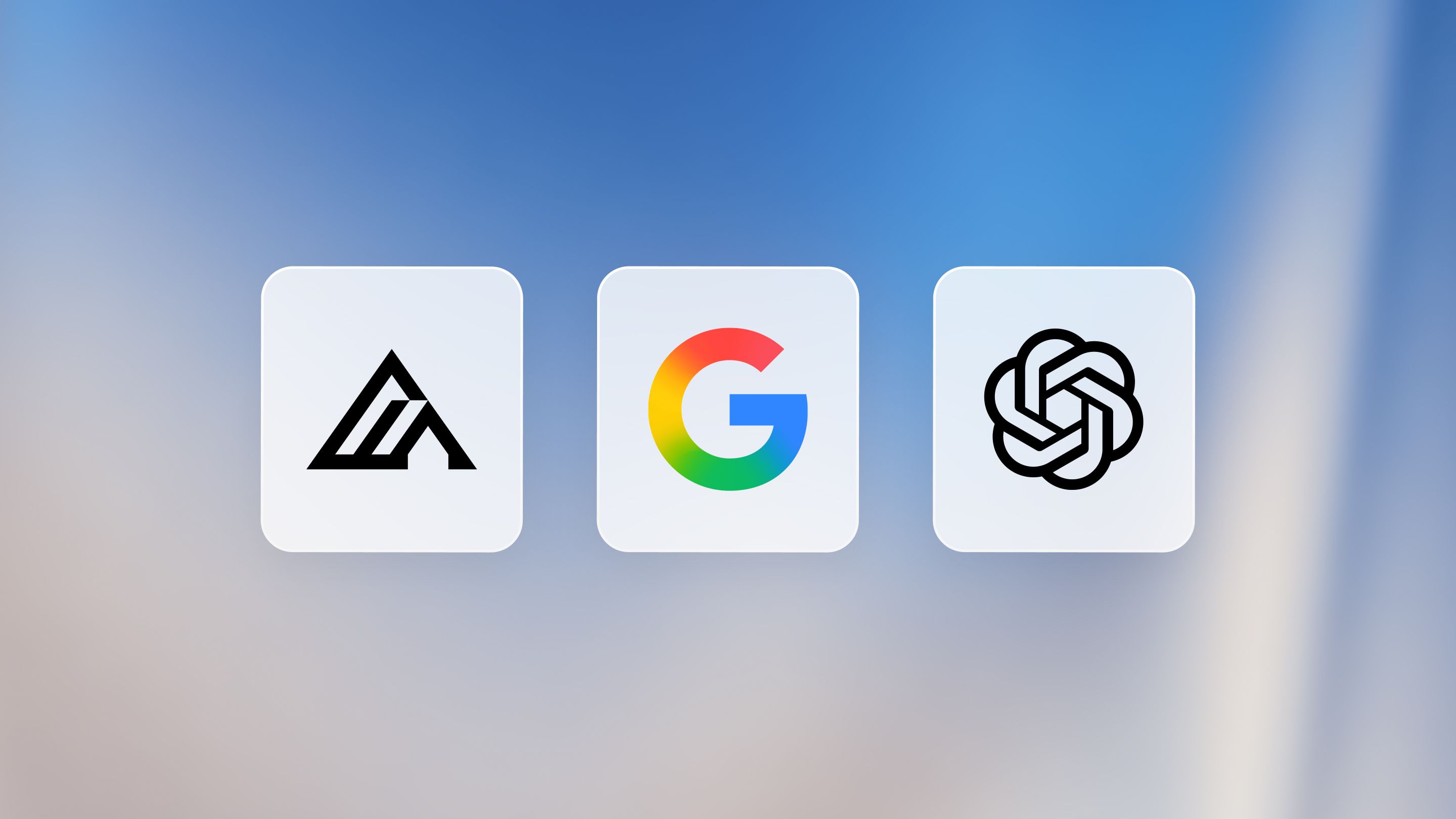
Until now, DALL-E 3 was the only image model available in Langdock. From now on, you can also access a new generation of powerful image generation models from Black Forest Labs, OpenAI and Google.
Starting today, the following image models are available in Langdock:
Black Forest Labs:
Google:
OpenAI:
The new models offer significantly improved image quality, more precise rendering of details and even better implementation of your creative ideas. With this expanded selection, you can now choose the perfect model for your specific use case and elevate your creative projects in Langdock.
How to use the new models: To switch between the different image models, you can select the various models via the new button in the chat field and use them to generate images.
If you do not select a specific model, your default image model will be used for all image generation prompts. We have now set Flux1.1 Pro Ultra as the default model, which previously was DALL-E 3. You can choose your standard image model in your Account Settings under Preferences.

We are excited to hear what you think of the new models! 🙌
*These models are currently not available with EU hosting and therefore not enabled by default.
Sep 29, 2025
We're excited to announce that Claude Sonnet 4.5 is now available to Langdock users!
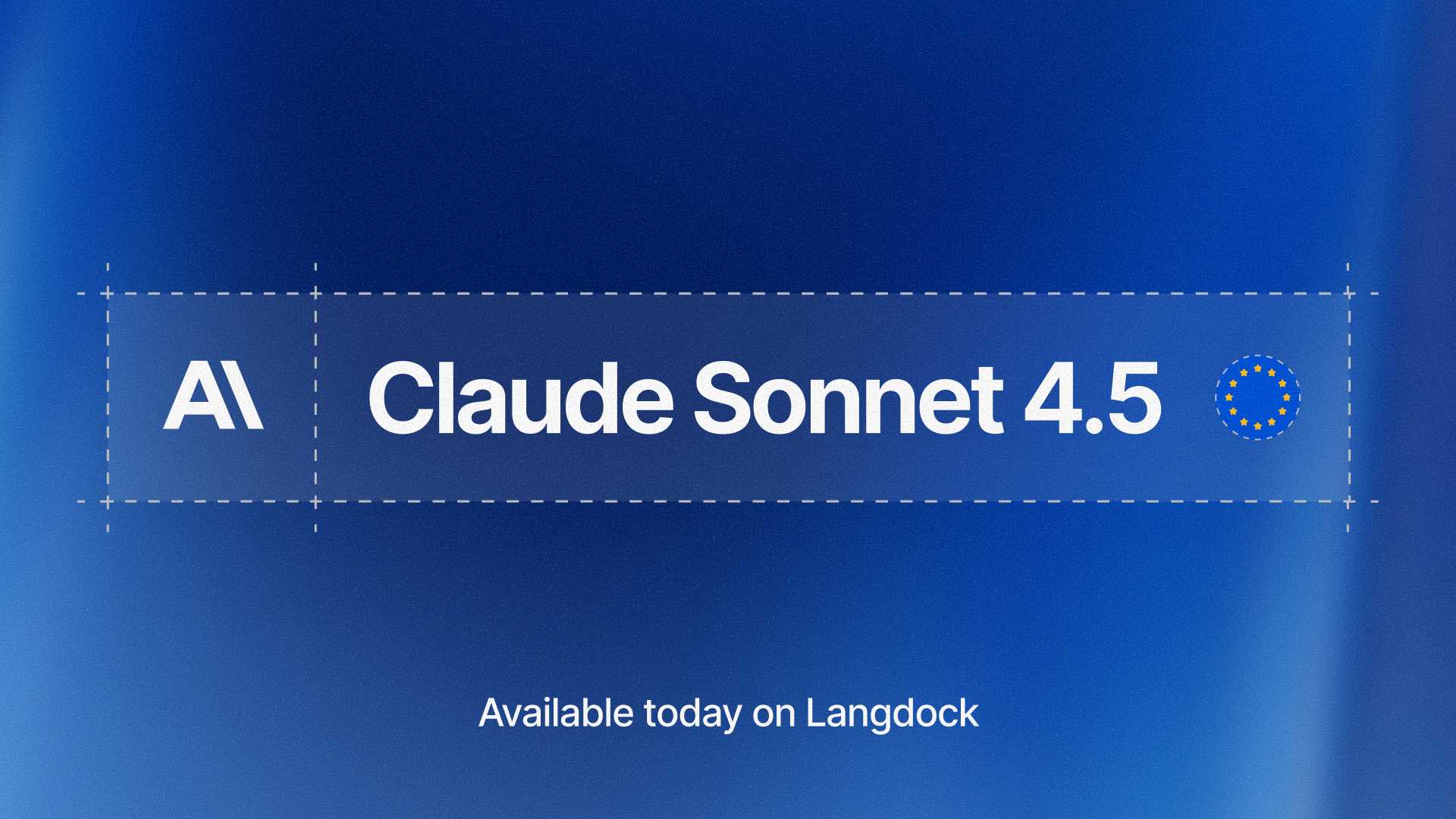
Claude Sonnet 4.5 is Anthropic's most advanced model yet. According to several benchmarks, it compares to the GPT-5 models and even surpasses them in some areas. You can read more about the launch in the announcement from Anthropic.
As with the previous versions of Claude Sonnet, we recommend it for coding and creating text, since it has an authentic and realistic tone of voice.
We added two models to give you the choice on whether you want to use reasoning. The models are Claude Sonnet 4.5 and Claude Sonnet 4.5 Reasoning.
We host the models on Google Cloud and AWS in the EU.
The models are live already, and you can test the new Claude version today.
Sep 03, 2025
Since launching our integrations platform, teams have been connecting their core tools to build more capable assistants. With Actions in Chat, you can now run integrations in any conversation. To make the user experience of working with integrations even more seamless and powerful, we shipped:
To get started quickly, duplicate a template, connect your tools, and customize the assistant to your own workflow.
1. Asana: Interact with your Tasks, Attachments, Projects, Goals, and more directly from Langdock. 2. Google BigQuery: Create, manage, share, and query on your data. 3. Google Analytics: Generate reports, analyze traffic, and get real-time and content insights. 4. Google Tasks: Manage with you tasks and task lists seamlessly from Langdock. 5. Microsoft Planner: Create and manage plans, tasks, buckets, and comments to organize and track work across your team. 6. AWS Kendra: Search your enterprise data with natural language queries and retrieve index configurations. 7. Stripe: Manage payments, subscriptions, invoices, and financial data for your customers. 8. Personio: Manage and sync employee, HR, and payroll data across your organization. 9. Tableau: List workbooks, extract view data, get view images, and explore your analytics content. 10. Monday.com: Manage boards, track tasks, and collaborate with your team. 11. Miro: Retrieve content from boards, frames, cards, sticky notes, and more. 12. Eleven Labs: Convert text to natural-sounding speech and access conversation transcripts. 13. Statista: Search Statista's huge variety of statistics and get concrete data to visualize in Langdock. 14. Open register: Get access to structured, official German company registry data. 15. Pylon: Manage accounts, teams, issues, and knowledge bases to streamline support operations.
Aug 19, 2025
We launched our Assistant Templates! 🎉
One of our most requested features is here: We built 24 different assistant templates based on popular use cases we’ve seen across our customers and our own team. Now, you can easily browse, use, and customize assistant templates.
Department-specific & general templates: Find assistants tailored for specific departments (e.g. Finance, Marketing or Sales) as well as general-purpose helpers.
Flexible usage: Use assistants directly or customize the templates by adapting the instructions, adding knowledge folders, or connecting your own integrations.
Built-In best practices: Each template reflects proven approaches to boost productivity and efficiency.
Check integrations: Some assistants use integrations that may not be enabled in your workspace. Make sure the required integrations are active and relevant for your use case.
Examples of available templates:
We’d love your feedback and ideas for new assistant templates! We will keep on adding new templates over time.
Explore the Assistant Templates and let us know what you think!
Aug 17, 2025
You can now sync folders from your integrations directly into Langdock assistants.
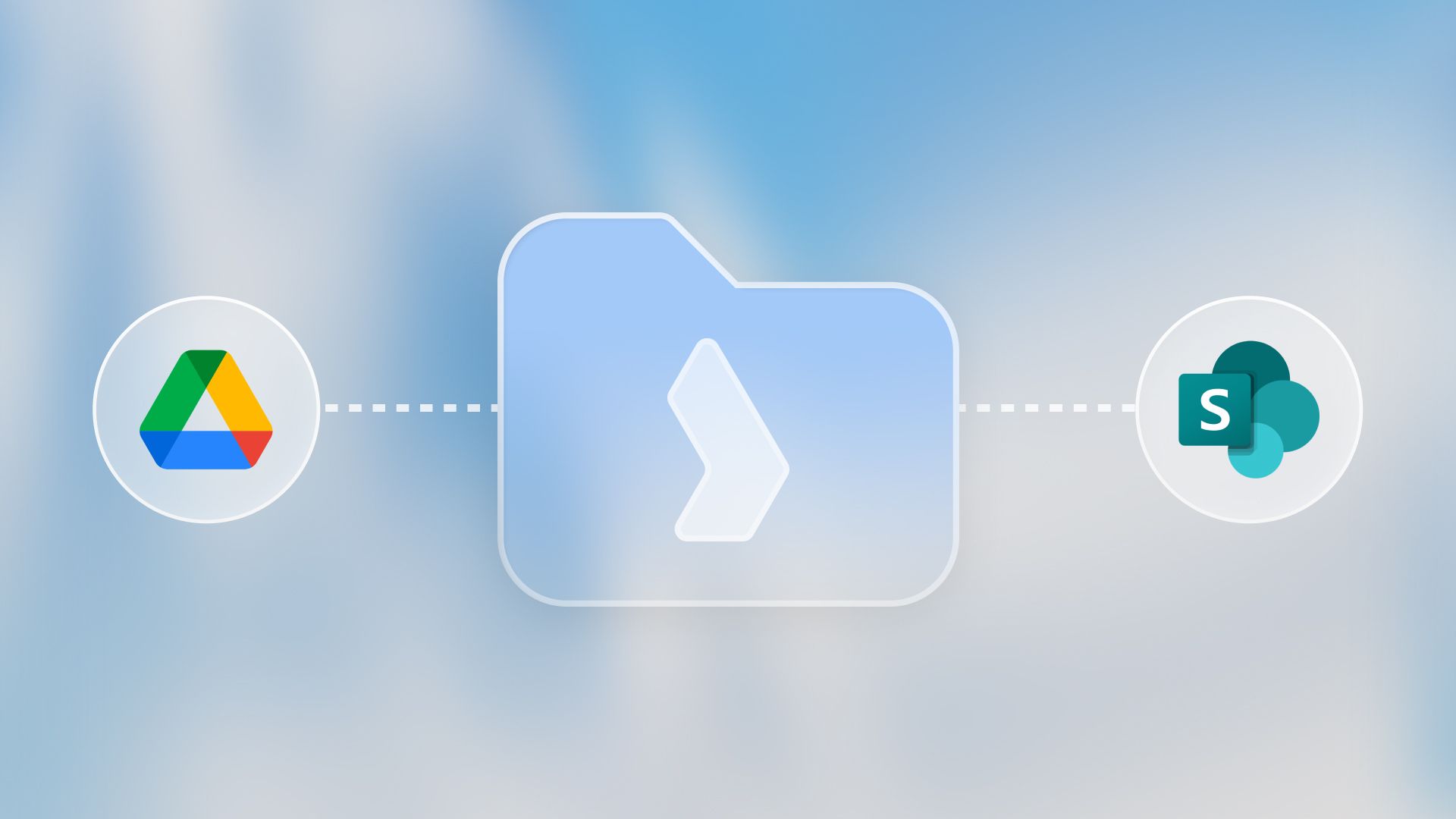
Supported integrations: Access files from folders in SharePoint or Google Drive directly within Langdock, to seamlessly interact with your knowledge base. Note: The integrations need to be enabled in the workspace.
Attach synced folders to assistants: Just like attaching individual files from your integrations, you can now attach folders to assistants. For example, you can attach a folder from your department, about a customer, or about a project you’re working on to your assistant. To attach a folder, just click on the “Attach” button in your knowledge section and search for your folder.
Always up-to-date: We synchronize all your folders daily for up-to-date information.
File limit and format restrictions: For now, up to 200 files per folder are supported. Spreadsheets and images are currently not supported.
Access control: Admins can configure who can use folder sync in the workspace settings under roles.
We look forward to your feedback, which will enable us to continue refining and expanding our integrations.
Aug 13, 2025
We're excited to announce a major productivity boost in Langdock: Actions in Chat! 🚀
You can now access powerful features directly from the chat by simply typing @. This new shortcut allows you to quickly select four different types of advanced actions directly in your chat. It’s a faster and more seamless way to work with multiple assistants, integrations, and knowledge folders.
Here’s an overview of the different Action types in Chat:
Actions in chat are helpful for easily combining assistants and integrations in your chat for one-time situations. Just type @ and get what you need, right where you’re working. For specific use cases that should scale across your teams and should be used regularly, it still makes sense to build an assistant with precise instructions.
This update helps you work even faster and more efficiently in Langdock. As always, we look forward to your feedback and can’t wait to see how you use Actions in Chat!
Aug 07, 2025
We’re excited to announce that GPT-5 is now available to Langdock users!
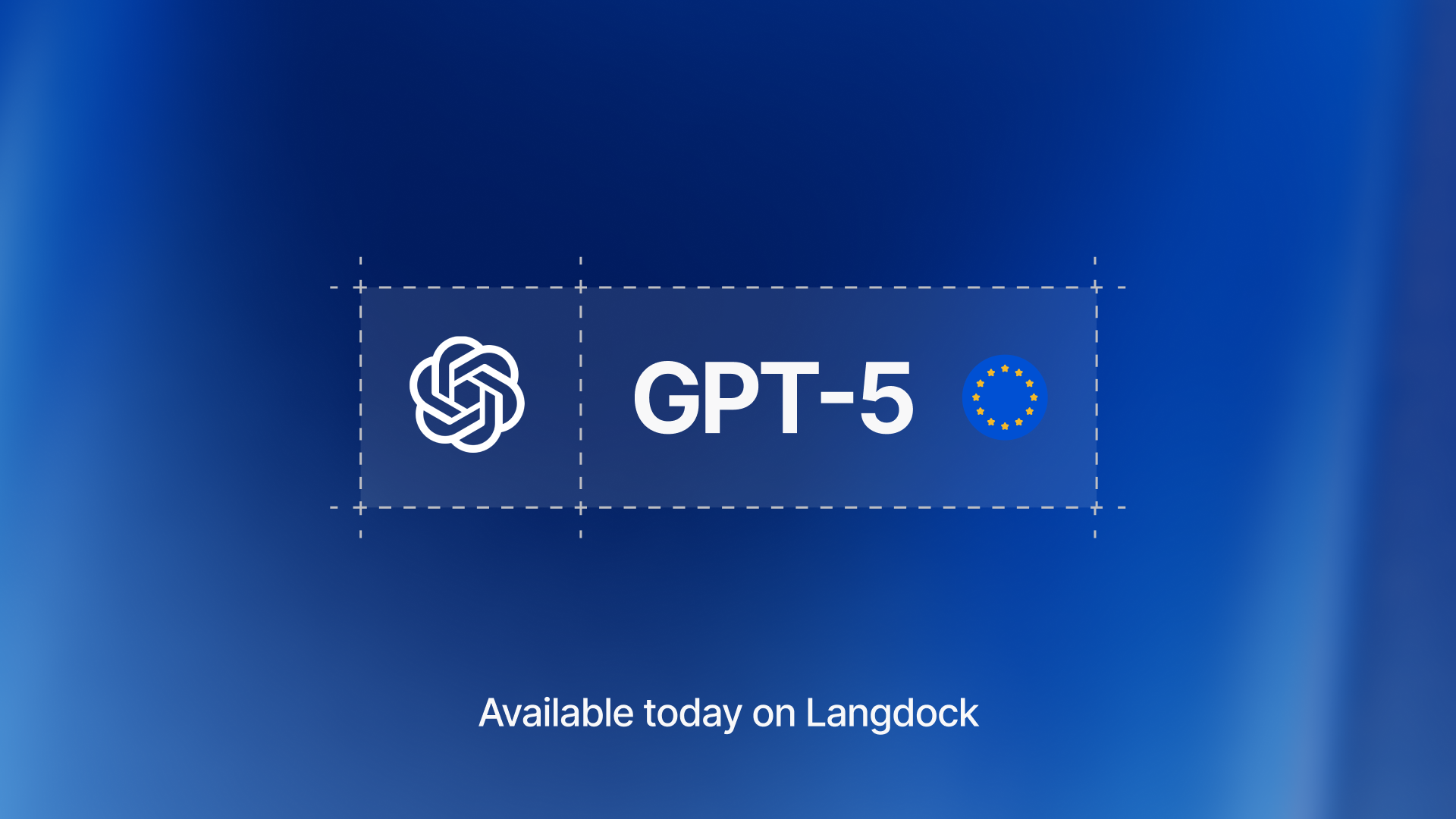
OpenAI just released their GPT-5 series, their most advanced language models yet. We just added GPT-5, GPT-5 mini and GPT-5 nano to Langdock. The models are an upgrade to the previous GPT-4.1 models - GPT-5 mini already performs better than GPT-4.1 and even o3 in some domains.
With a much larger context window and faster response times, GPT-5 enables more seamless and productive workflows—whether you’re handling complex research, generating long-form content, or building advanced assistants.
The key highlights are:
We just added the models to Langdock, so you can now select the model in your chats and assistants.
Jul 31, 2025
We're excited to introduce Projects, a new organizational feature that gives you more flexibility in organizing your chats and helps you work on bigger projects.
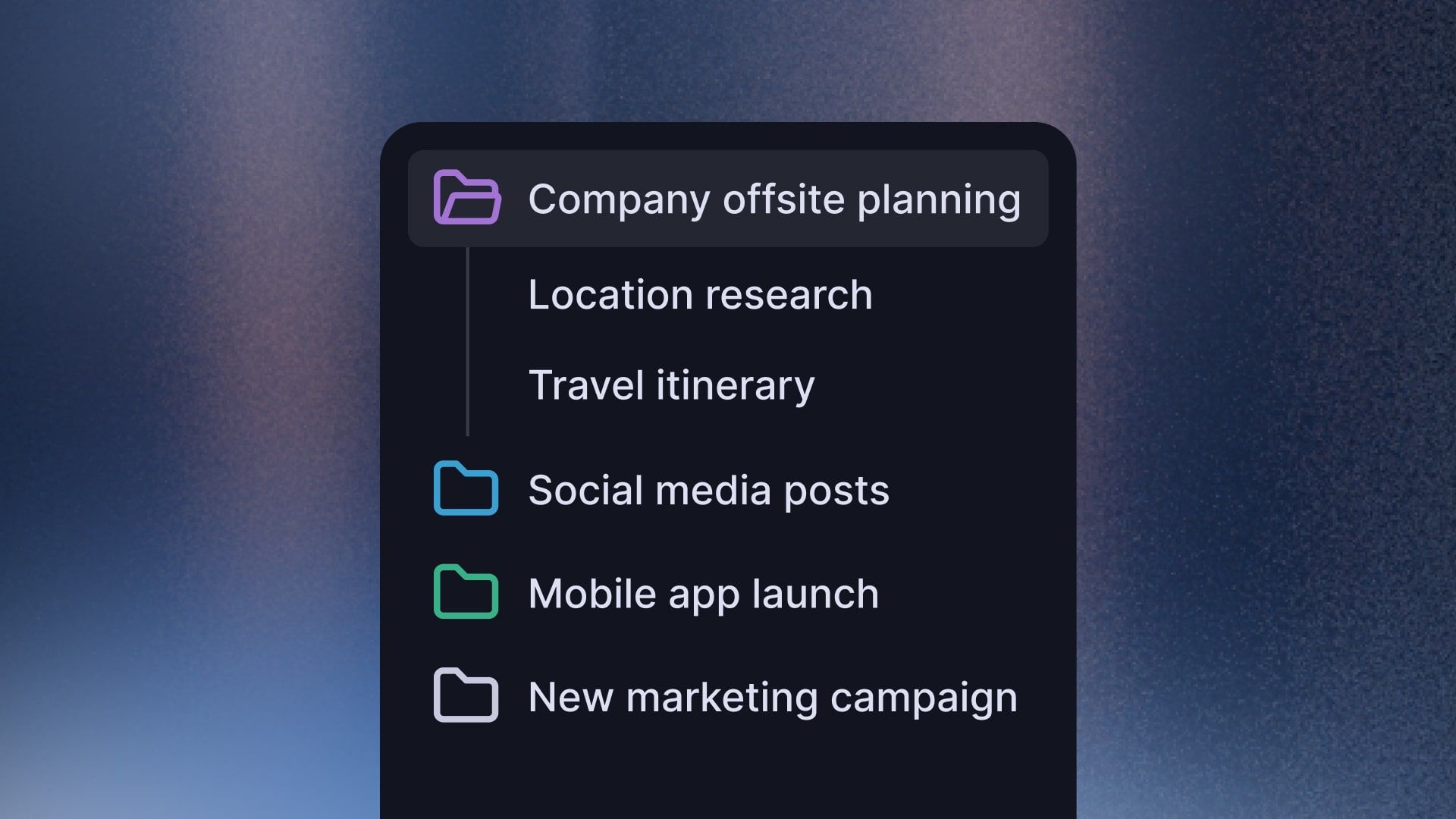
What are Projects? Projects allow you to group chats together in a specific context. Whether you’re working on the next big marketing campaign or other project, all of your chats will stay together. To improve your workflow even further, you can attach custom instructions and files to each project.
Each project includes:
How Projects Work
You can create your first project from the sidebar. We'd love your feedback on how this fits into your workflow!
Jul 22, 2025
We are excited to announce that Langdock now supports the Model Context Protocol (MCP)! 🚀

What is MCP?
MCP is an open protocol that standardizes how AI applications connect to data sources and tools. Think of MCP like a USB-C port for AI applications. Just as USB-C provides a standardized way to connect your devices to various systems, MCP provides a standardized way to connect AI models to different data sources and tools.
More specifically, you can connect your assistants to remote MCP servers over the internet. This offers more integration possibilities with different data sources in addition to existing integrations.
Key Features
How to Get Started with MCP
You can set up MCP integrations, through the "Add integration" button in the integration menu. Then, you can select if you want to build an integration with JavaScript (as before) or connect a remote MCP server. To set up MCP integrations, users need permission to create custom integrations.
Detailed instructions can be found on our docs: https://docs.langdock.com/resources/integrations/mcp
Note: MCP is still in a very early stage of development. We strongly recommend thoroughly testing any integrations you build using MCP before relying on them in production.
Jul 14, 2025
We're excited to launch Deep Research, a new chat feature designed for comprehensive, long-form research reports that require in-depth analysis across multiple sources.
Deep Research is built for complex research projects that demand thorough investigation rather than quick answers. It conducts multiple strategic web searches, examines findings from different sources, and synthesizes everything into a well-structured report.
Deep Research is particularly powerful for background research, exploring industry trends, market analysis, competitive analysis, academic research, strategic planning, and any task requiring comprehensive information gathering from multiple online sources. The resulting report with citations can be downloaded as a PDF, saving you hours of manual research and compilation.
Deep Research intelligently plans its approach to gather insights from multiple angles. You can watch the search activity in real-time and see sources as they are added. No matter which model you select in the chat, Deep research always uses pre-configured models to ensure the best possible quality. There is currently a usage limit of 15 searches per user per month.
Deep Research is now available across all workspaces! 🚀
On another note: Microsoft Azure is currently experiencing some speed issues with GPT-4.1. While we still recommend it as the default model, you may also try GPT-4.1 mini as a faster alternative.
Jun 26, 2025
We are excited to announce that o3 and GPT-4.1 mini are now available in Langdock! 🚀
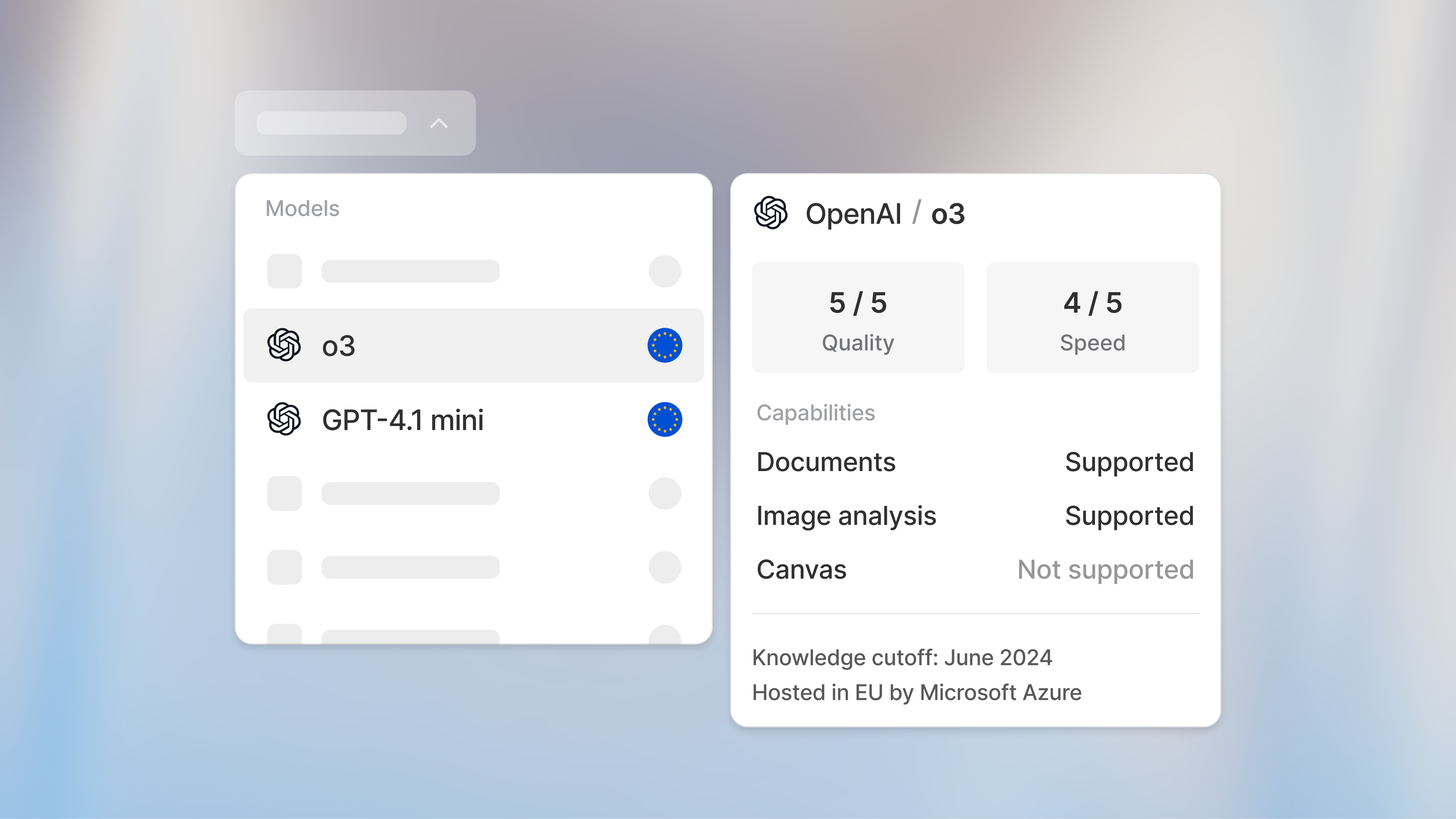
o3 is OpenAI's most powerful reasoning model that sets new standards across coding, math, science, and visual reasoning tasks. It excels at technical writing, instruction-following, and tackling complex multi-step problems. o3 is perfect for strategy, research, and advanced coding tasks that demand sophisticated problem-solving capabilities.
GPT-4.1 mini is the smaller, faster version of GPT-4.1, designed for everyday tasks with significantly faster responses. This efficient model delivers performance competitive with GPT-4o while reducing latency by nearly half. GPT-4.1 Mini excels at high-volume tasks, real-time applications, and rapid content generation. This model was previously available as a global deployment and is now available in the EU.
Both models are now live. Choose o3 for advanced reasoning and intelligence, or GPT-4.1 mini for speed and efficiency!
Important Notice: We will deprecate GPT-4.5, o1 (Preview), o1 mini and Gemini 1.5 Pro, on the 11th of July. These models will no longer be available on Langdock from that date forward. We recommend switching to the newer versions of these models.
Jun 19, 2025
We are excited to announce that Canvas is now out of Beta and available to all Langdock users! 🎉
Canvas is our interactive editing environment to help you with your writing and coding tasks. With Canvas, you can edit text and code directly while receiving AI suggestions.
This release comes with a few significant updates based on your feedback since the launch of the beta. Thank you to everyone who contributed their thoughts and suggestions to help us improve the Canvas feature.
Highlights of this release:
You can ask the model to use Canvas or alternatively, you can toggle the Canvas mode on by clicking the button in the chat field.
We aim to continually improve Canvas and look forward to seeing how you use it to power your work.
Jun 18, 2025
We are excited to announce that Gemini 2.5 Flash and Gemini 2.5 Pro are now available in Langdock! 🚀
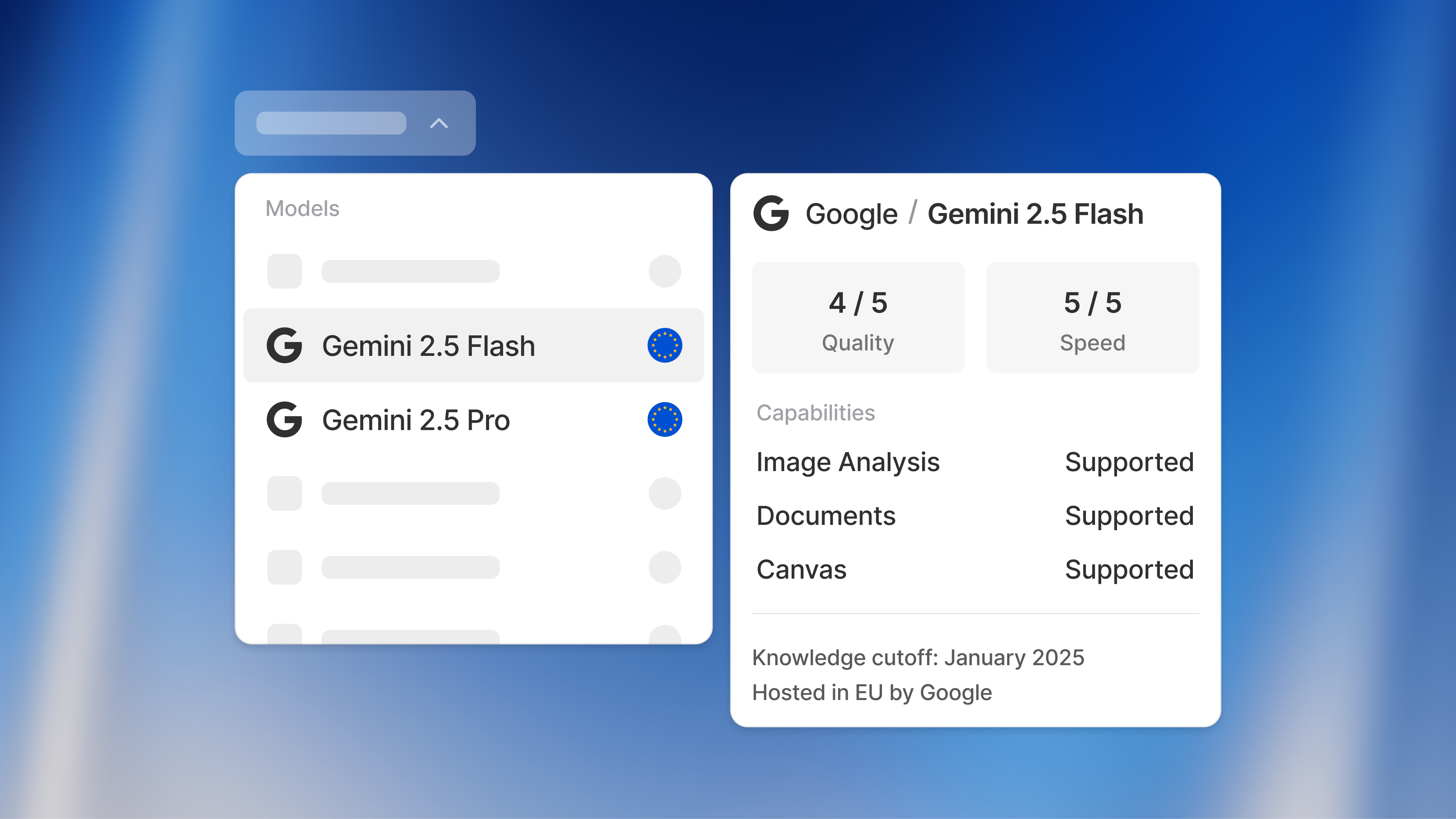
Gemini 2.5 Flash is the faster and more efficient model of the 2.5 version, designed for real-time, high-volume tasks. It delivers fast responses, supports up to 1 million context tokens, and is ideal for instant writing, summarization, and Q&A; Perfect for Assistants and Chat where speed and efficiency matter most.
Gemini 2.5 Pro is Google’s most advanced model for complex reasoning, coding, and multimodal tasks. Comparable to Claude's "Sonnet" and OpenAI’s “o” models, Gemini 2.5 Pro is ideal for strategy, research, and coding tasks requiring advanced problem solving.
Both models are now live - choose Flash for speed and efficiency, or Pro for intelligence and depth.
Workspace Admins can activate these models in the Workspace Settings under the "Models" tab.
Jun 02, 2025
We are excited to announce that GPT-4.1 and o4 Mini are now hosted in the EU and available in Langdock. 🙌
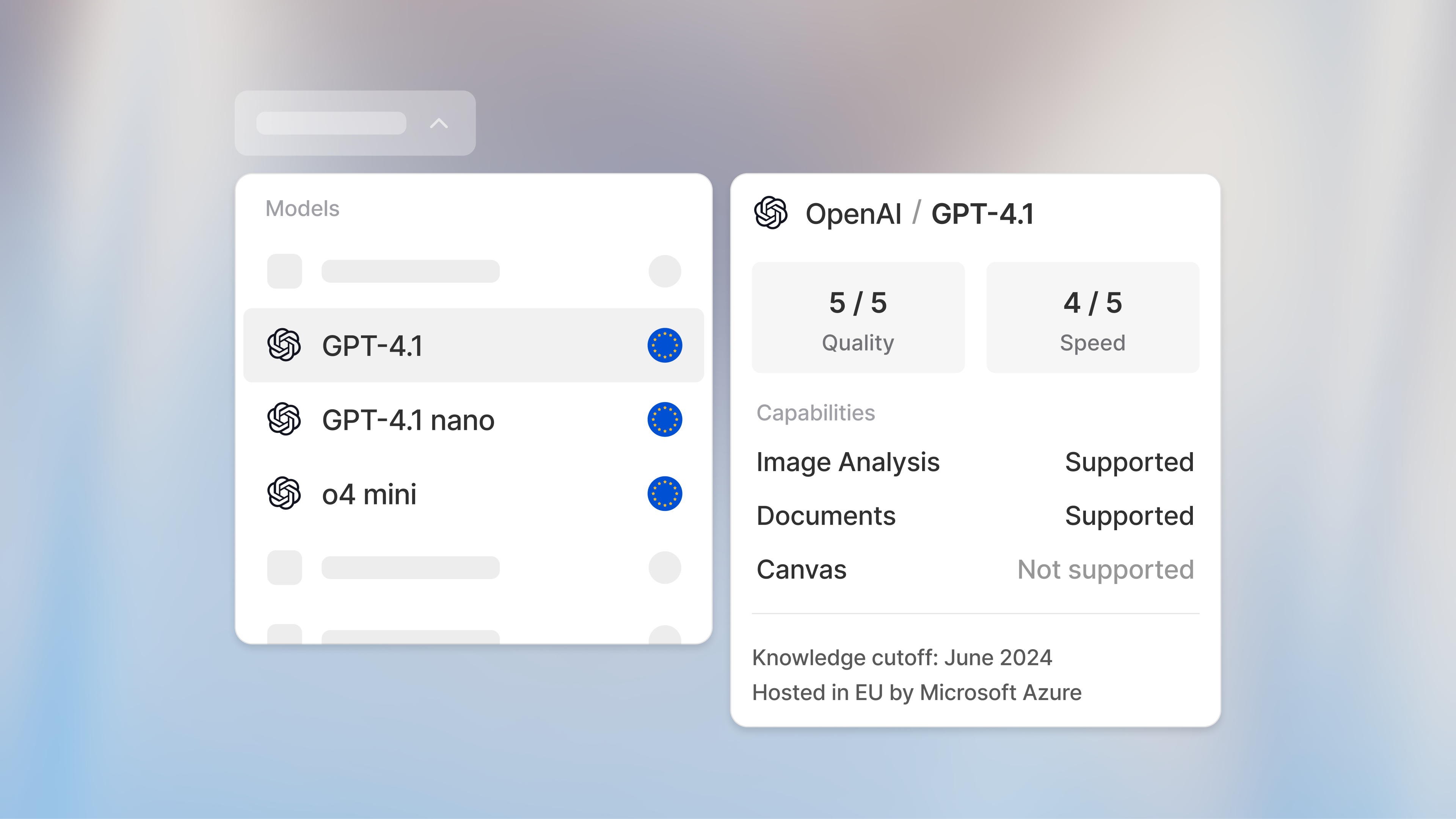
GPT-4.1 is the latest version of the GPT-4 series, performing better on speed and quality than previous version. We set GPT-4.1 the default model for all new workspaces on Langdock. Additionally, all workspaces previously set to GPT-4o, GPT-4o Mini, or GPT-4 have been migrated to GPT-4.1 as their default model.
We are also pleased to introduce o4 Mini as a new model option on Langdock. o4 Mini is designed for fast, efficient reasoning and excels at handling complex instructions, coding, and strategic tasks. Similar to o3 Mini, it offers a strong balance between speed and accuracy.
May 23, 2025
We've integrated the new Claude version into Langdock! 🚀
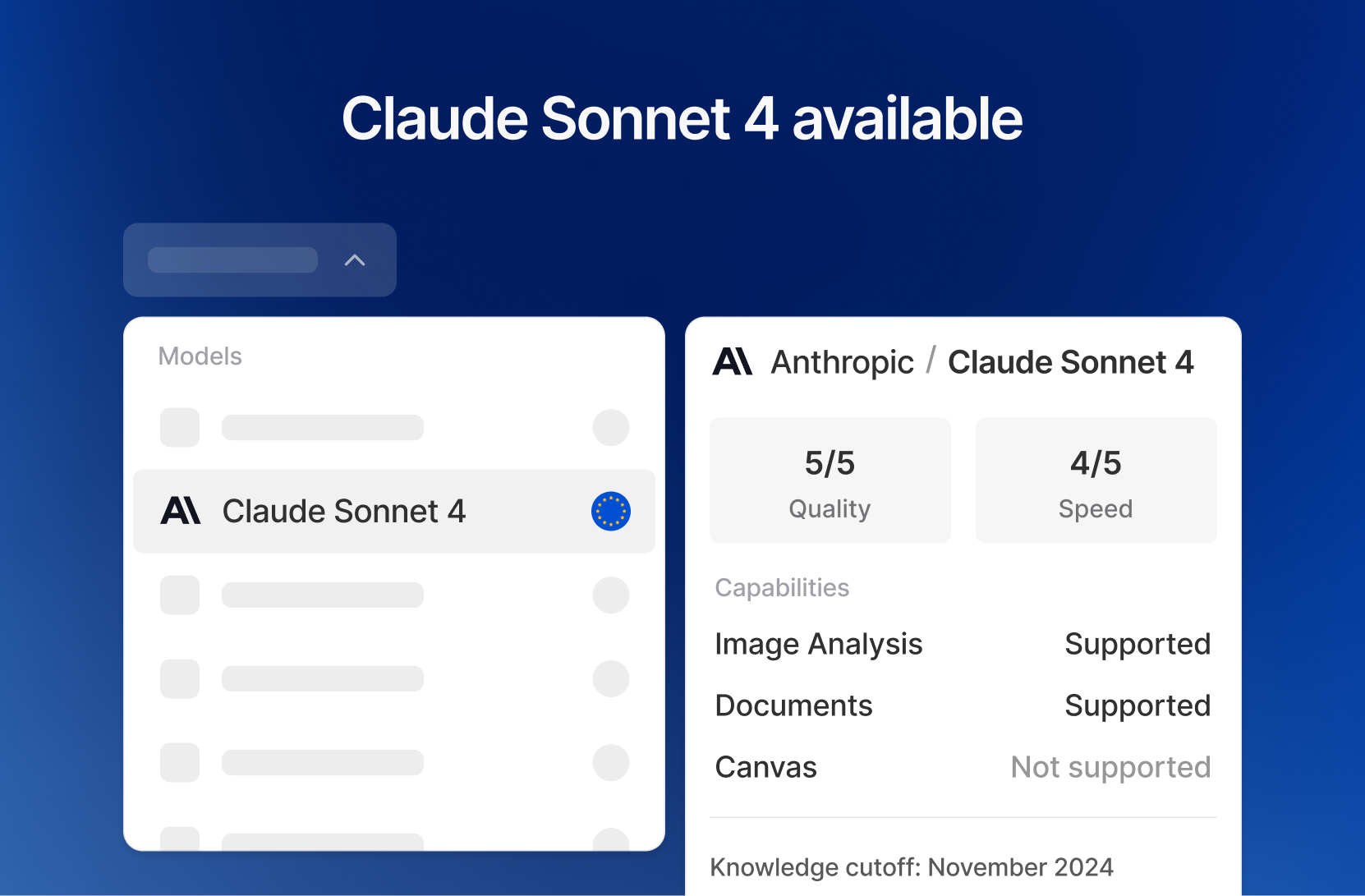
Claude Sonnet 4 is the successor to Sonnet 3.7, a model favored by many of our users for text generation, coding and problem-solving tasks.
Like with Sonnet 3.7, Sonnet 4 offers the option to use reasoning for complex tasks. This is why we have added the modes as two separate models: Claude Sonnet 4 (Preview) and Claude 4 (Reasoning Preview).
The standout features of Claude Sonnet 4 include:
May 06, 2025
Today, we are excited to launch the Langdock mobile app! You can now download Langdock as a dedicated Android or iOS app and use AI from your phone.
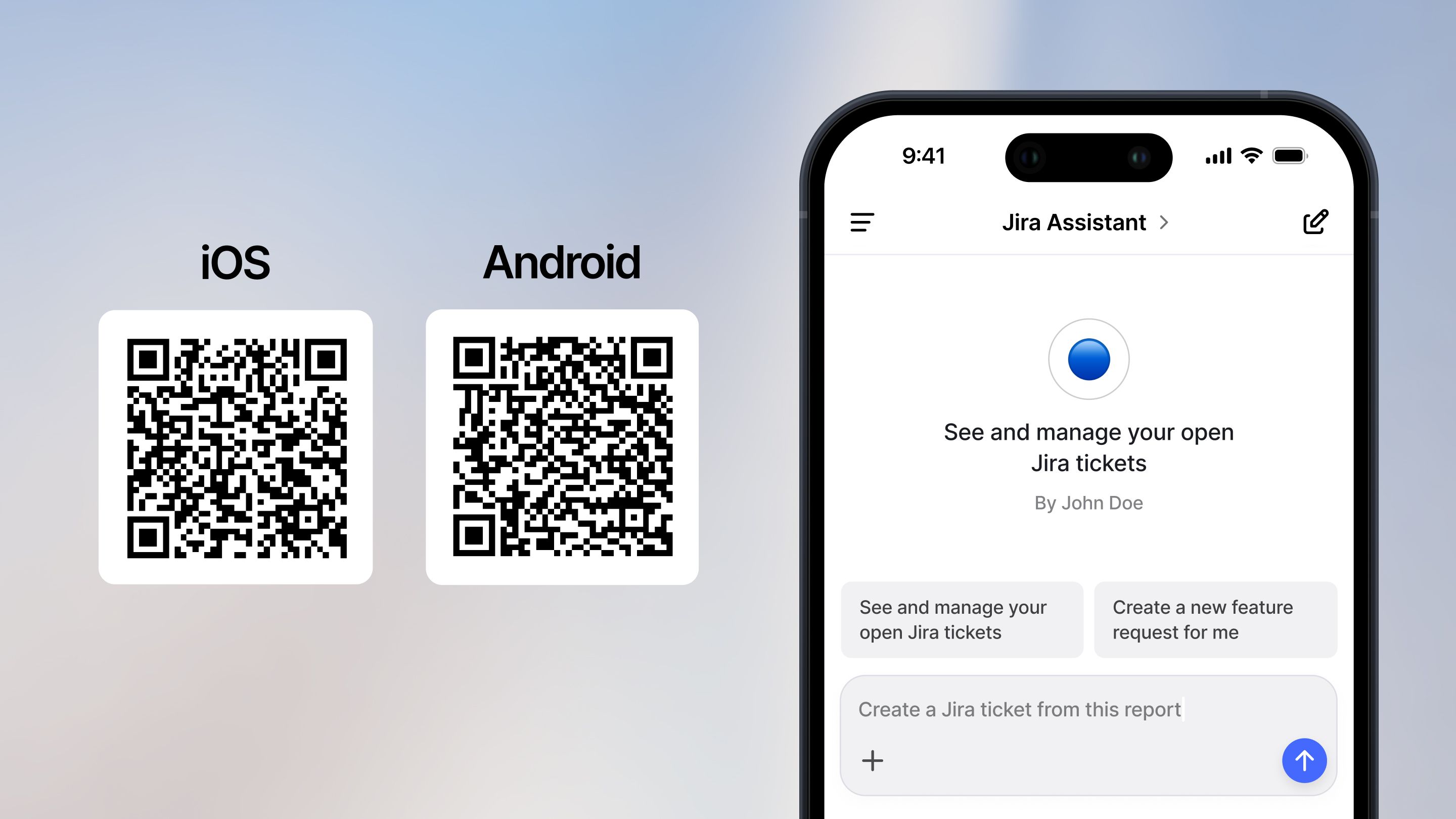
You can now use Langdock wherever you are. You can choose between your models, use the chat and your assistants.
Additionally, we added one highly requested new functionality: You can now use your voice as input, Langdock will transcribe it, and submit it as a prompt. Look out for the microphone icon in the prompt input field!
To download the app, go to the Apple App Store here or the Google Play Store here.
Apr 03, 2025
We've integrated a new version of GPT-4o into our platform! 🚀 This powerful version delivers improved response quality and faster generation times.
The model was previously available as "GPT-4o (latest)". We merged the two models now and the normal "GPT-4o" is the newer model.
The GPT-4o image generation capability announced a few days ago is not available in a version hosted on EU servers yet. We will add it as soon as it becomes available in the EU.
We've also made several improvements to enhance your experience:
Mar 17, 2025
We launched our new integrations! It’s much easier to integrate other software tools into Langdock now to retrieve data and take actions. The update consists of three main parts:
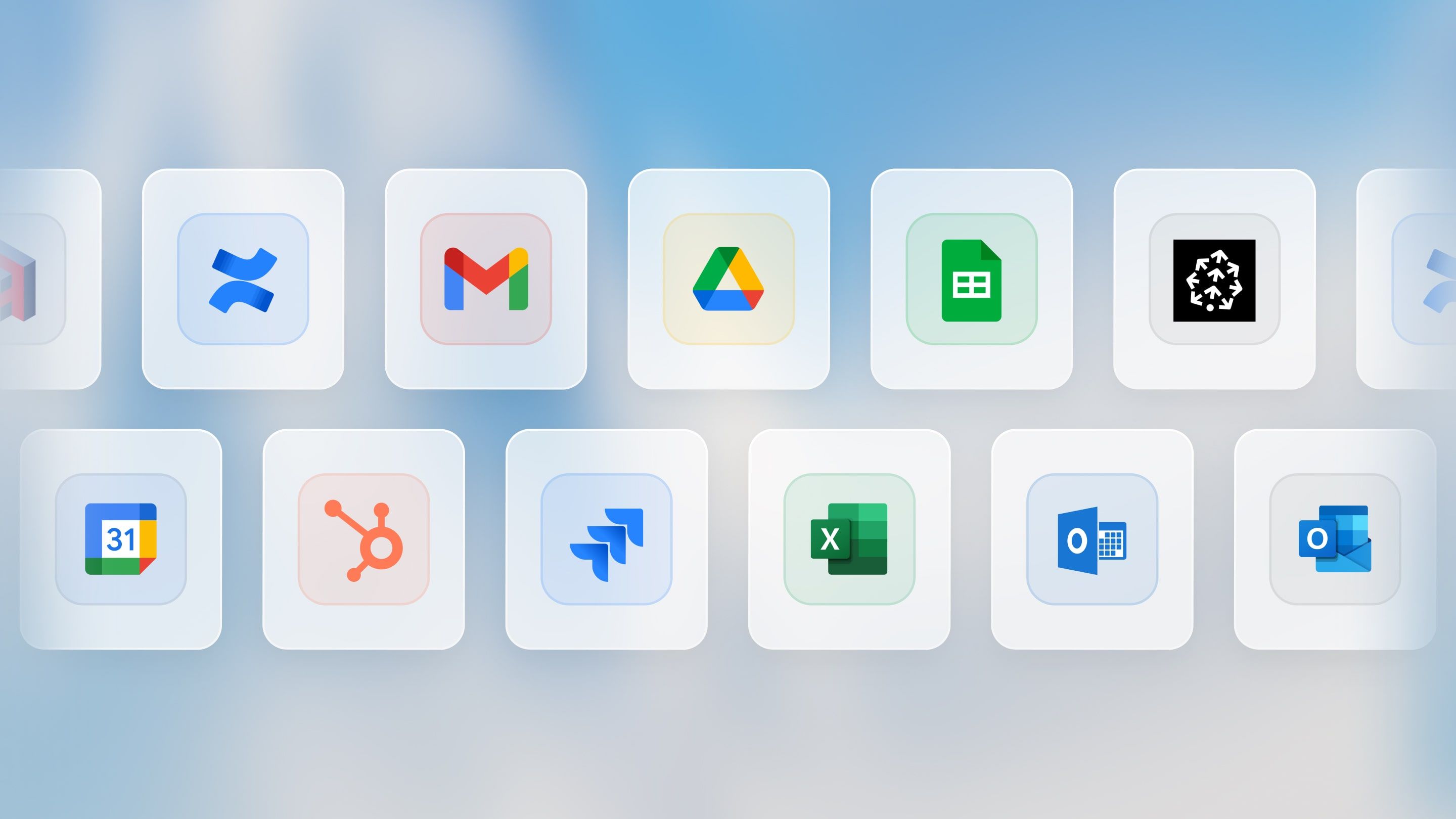
We made integrating external tools into your assistants easier and pre-built many new integrations for the tools our customers use. For example, you can now use the following integrations: Jira, HubSpot, Google Sheets, Excel, Outlook, Google Calendar, and Google Mail.
You can now easily add actions that your assistants can perform. Example actions are:
Here are more details on how to use them. If you’re missing an integration or specific action, please let us know!
The Langdock team will build integrations to all standard software tools in the coming weeks. If we don’t have an integration (yet), or you want to integrate an internal tool, you can build your own integrations.
We deprecated the previous OpenAPI-schema-based integrations in favor of a simpler integration builder that also allows you to write custom JavaScript to cover all kinds of edge cases. The integrations/actions now live outside of assistants, so you can share and reuse them in multiple assistants. You can follow this guide to set up your own REST API based integrations.
We also improved the interface and experience of existing integrations. Here are the most significant changes:
Additional information for workspace admins:
This new integration framework will allow for many more use cases in Langdock, and it’s just the beginning. In the coming weeks, we’ll add many more functionalities to work with all kinds of data in Langdock. Stay tuned!
Mar 06, 2025
We just shipped massive speed improvements across our platform! While we are continuously working on model speed, you'll notice everything else is running much faster now. Plus, we released some much-requested improvements on our chat input and API.
Feb 26, 2025
We've just added three powerful new models to Langdock: Claude 3.7 Sonnet, OpenAI's o3 Mini and Gemini 2.0 Flash.
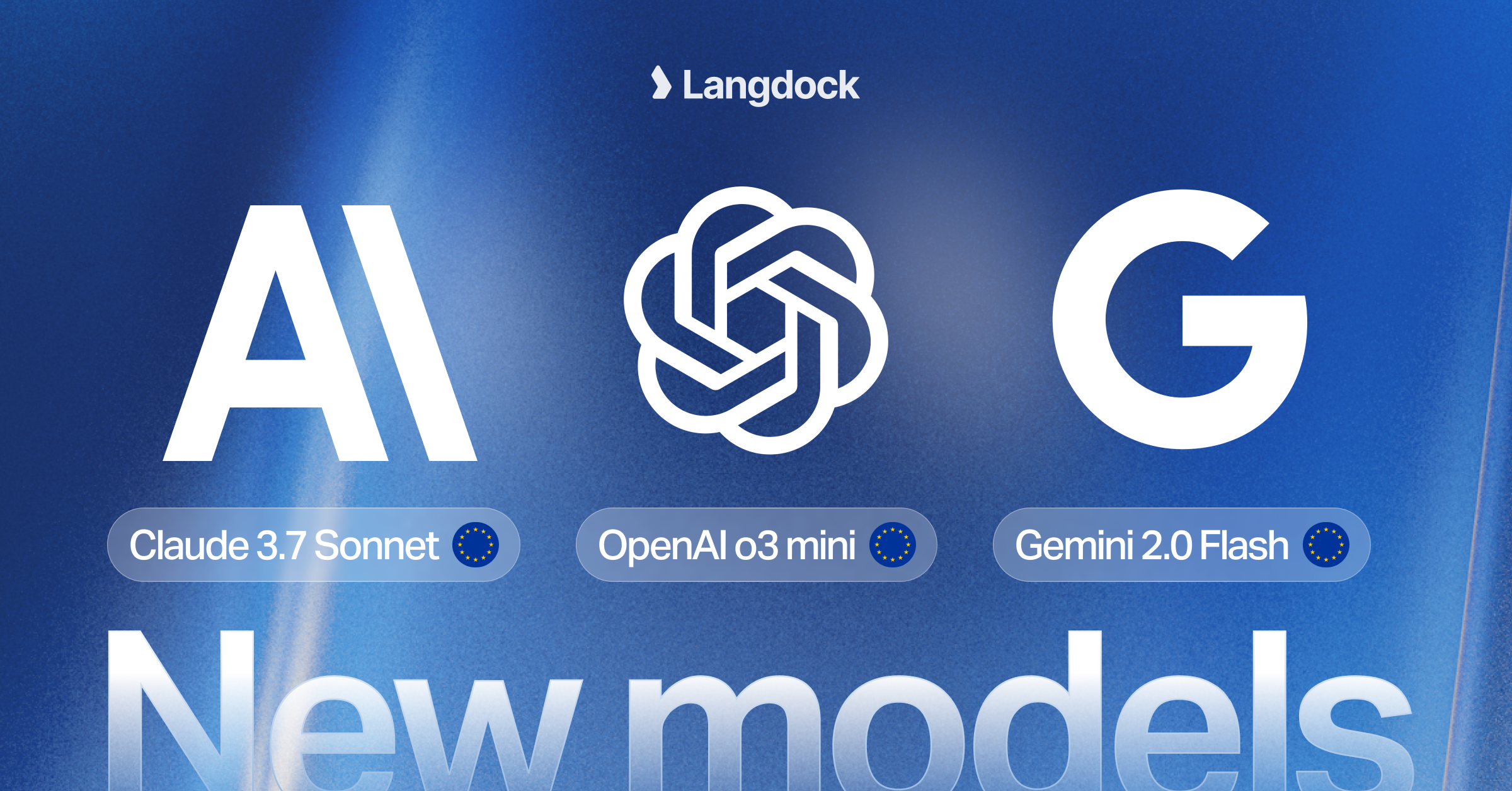
Claude 3.7 Sonnet is the successor to 3.5, one of the most used models in our user base. The previous 3.5 version is used already by many users for writing tasks, such as emails or translations and for coding.
The upgrade of the new model version is a dual-mode capability, which were added as two separate models
We have added the modes as two separate models (Claude 3.7 Sonnet and Claude 3.7 Reasoning).
OpenAI's o3 Mini is the latest and most-efficient model of OpenAI's reasoning series.
Reasoning models, like o3 Mini, o1, r1 from DeepSeek or the Claude 3.7 Sonnet model mentioned above use chain-of-thought thinking to split a task into several steps. This makes them useful for complex tasks, like maths, physics, complex instructions, coding or complex strategic tasks.
o3 Mini is the latest and most efficient model of OpenAl's reasoning series. o1 is the broader knowledge reasoning model, and o3-mini is faster compared to the previous one, balancing speed and accuracy. As o3 Mini allows for control over its reasoning efforts, we have added the standard mode as well as a high-effort reasoning mode as two separate models (o3 Mini and o3 Mini High).
We also added the new Gemini 2.0 Flash model, which is now available in the EU as well. The Flash model from the previous 1.5 Gemini generation was the faster, smaller model compared to the larger and more advanced Gemini 1.5 Pro. The new Gemini 2.0 Flash outperforms Gemini 1.5 Pro on key benchmarks and is twice as fast.
Feb 05, 2025
We are bringing a new way to interact with assistants in Langdock: Assistant forms. When building an assistant, editors can now choose to use the new form input method, where they can define the input fields shown to users.
You can build an interface to structure the inputs users need to enter to receive high-quality results, similar to survey forms. When users use an assistant using the new input method, they will be presented with the form the editor built. You can use inputs you know from other tools, like:
This gives assistant creators more flexibility when creating assistants and allows them to tailor the input structure to your specific needs, while making it easier for other users to use the assistant.
Feb 03, 2025
Memory offers deeper personal customization of the model responses, by saving information from past interactions in the application.
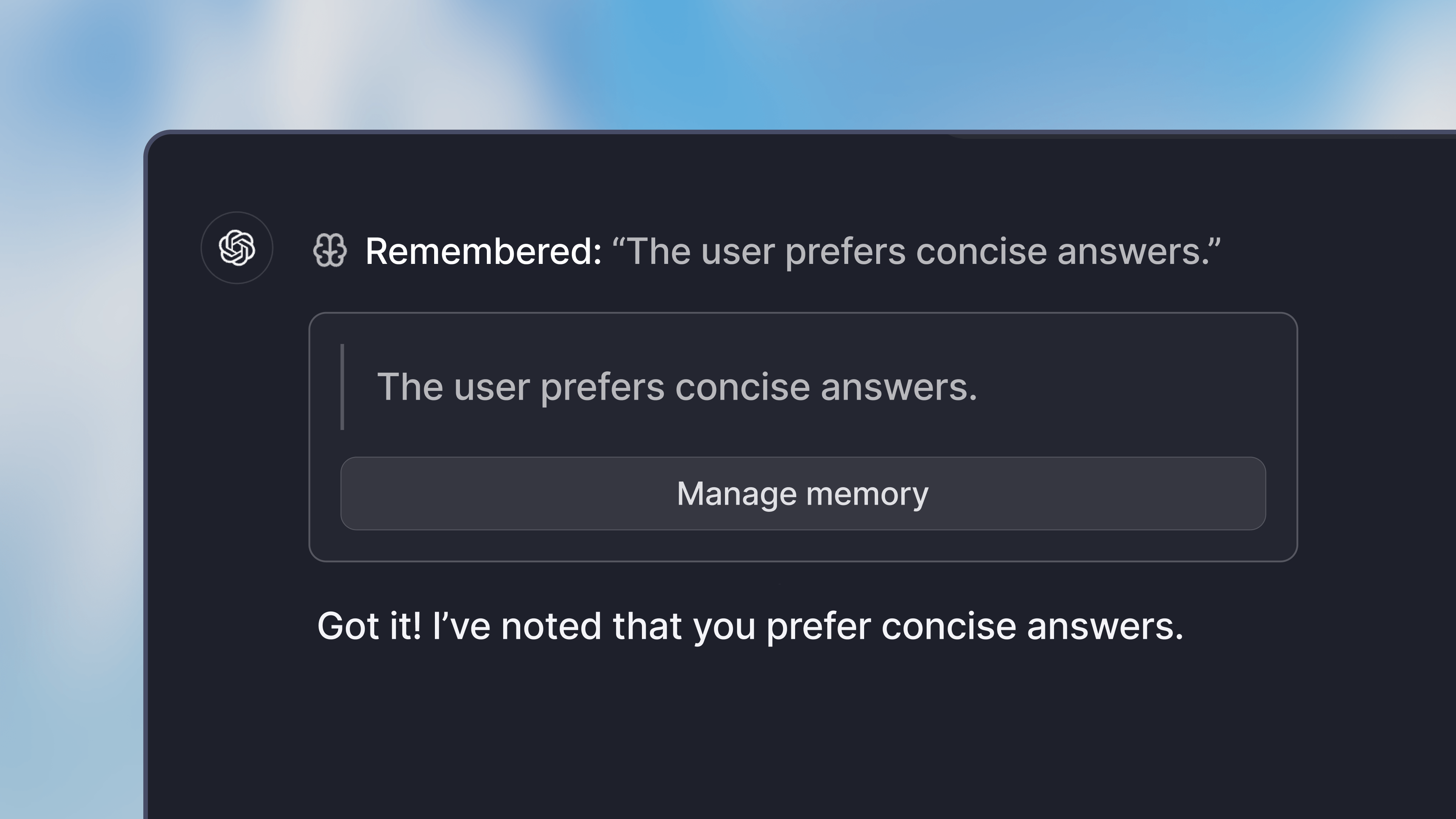
When using memory, you can tell the model to remember certain information about you, your work or any preferences you have. It will then save the information in the application. For example, you could have it:
By default, Memory is disabled. To use it, head over to the preferences in your settings. There you can enable chat memory in the capabilities section.
All memories are stored in your account, and are available to you in all your chats (not assistant chats). They are not accessible by others in your workspace.
Jan 29, 2025
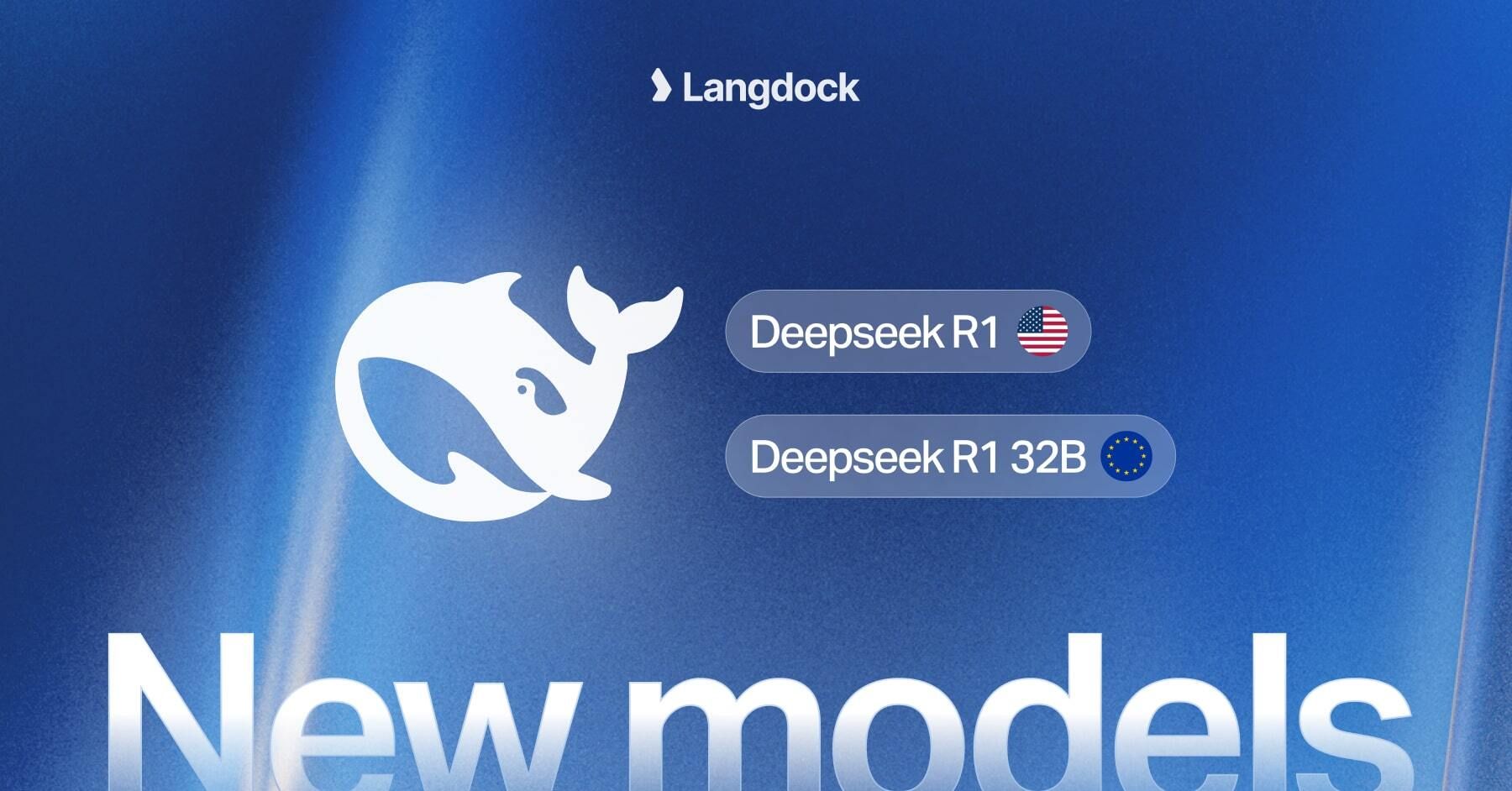
We've added support for the new R1 model from the Chinese AI company DeepSeek. R1 has been receiving a lot of attention in the media recently for its strong performance. The model rivals OpenAI's o1-series and is open-sourced for commercial use.
The R1 model is available in multiple versions. We are self-hosting the 32B version of the model on our own servers in the EU and consume the full 671B version from Microsoft Azure in the US. Since the model is still early and focuses on reasoning, we have deactivated tools like document upload, web search and data analysis for now.
Admins can enable the models in the settings.
Jan 26, 2025
We're excited to announce that you can now work with audio and video files in the chat.
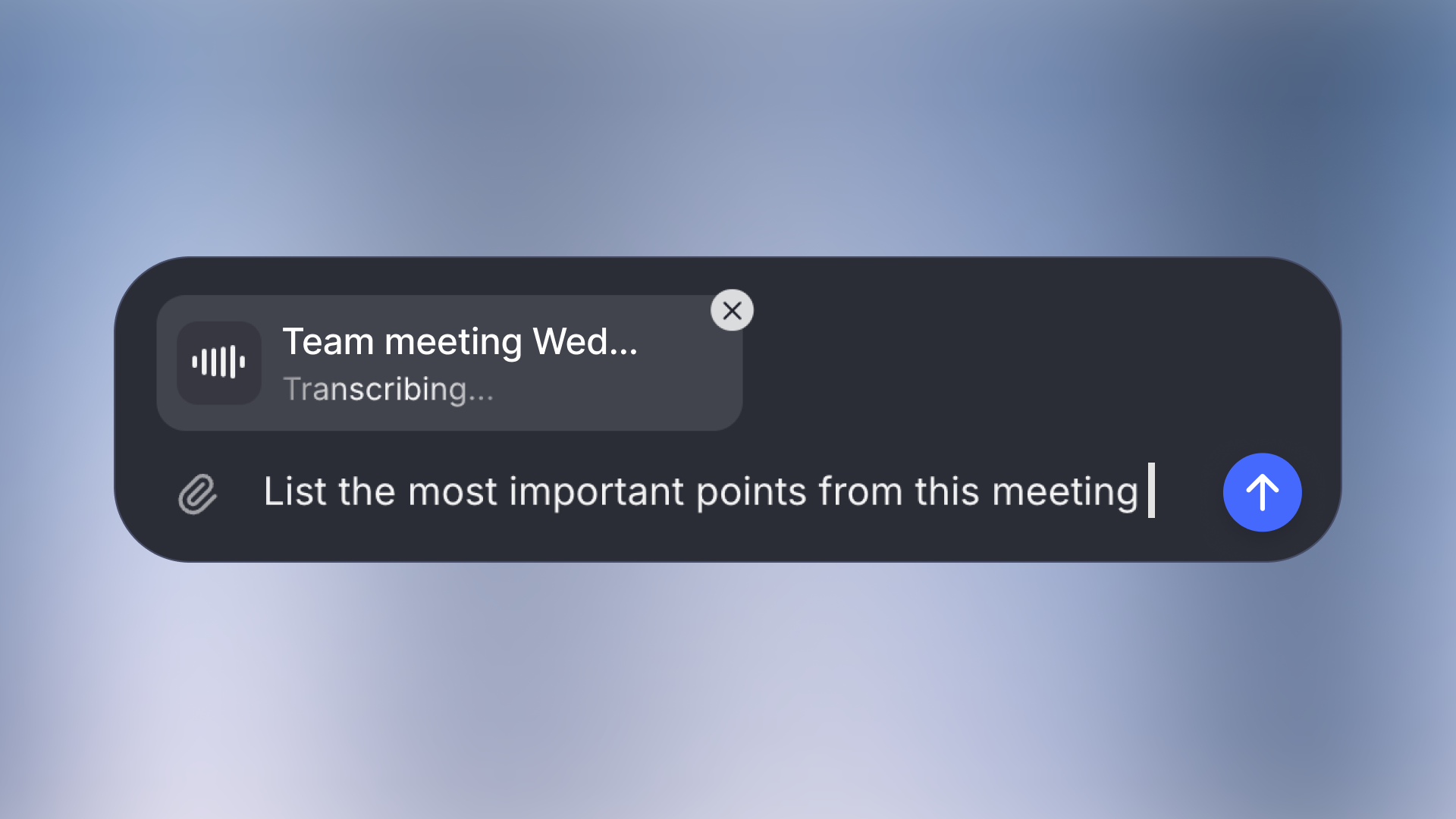
Upload your recordings (up to 200MB) and our system will automatically transcribe them, allowing you to have natural conversations about the content.
You can work with all common formats including MP4, MP3, WAV, and MPEG files. Whether you need to review a team meeting, analyze a client call, or process a voice memo, simply upload your file and start asking questions about its content.
Jan 22, 2025
Langdock now offers an enhanced web search mode, providing quick and current answers along with links to relevant internal sources from the internet.
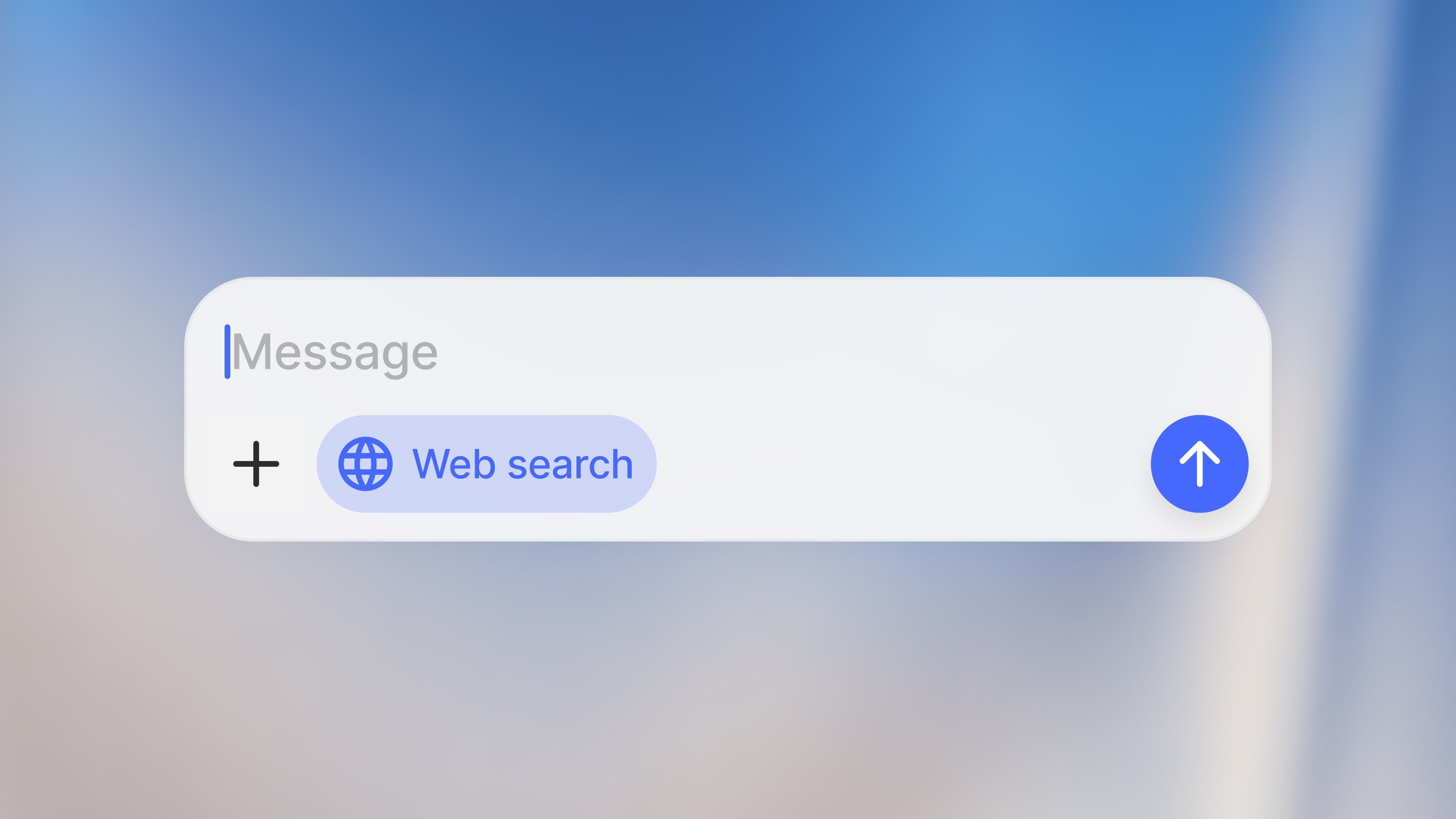
If web search is enabled for your workspace, you can now turn it on in the newly redesigned chat input bar. This will force the model to search the web for up-to-date news and information regarding your query.
Dec 11, 2024
We launched the API for assistants. You can now access assistants, including attached knowledge and connected tools through an API.
To enable an assistant to be accessible through the API, admins need to create an API key in the API settings. Afterward, you can share the assistant with the API by inviting the key like a normal workspace member.
After configuring the API in your workflow (here are our docs), you can then send messages to the assistant through the API. The API also includes structured output and document upload.
Nov 22, 2024
You can now navigate Langdock and search chats directly from your keyboard with the new command bar feature. This allows for quick and easy access to the information you need, right at your fingertips.
Pressing Cmd + K on your keyboard (for Windows Ctrl + K) opens a menu to quickly perform different operations. Here are a few examples:
We also added a search button in the top left corner which opens the command bar.
There are also new and updated shortcuts:
We hope these improvements make you even more productive when using Langdock.
Nov 20, 2024
You can now incorporate variables directly into your prompts and create dynamic templates that can be easily reused across different contexts.
When creating a new prompt in the prompt library, wrap a word with {{ and }} or click on the variable button at the bottom to make it a variable. When using the prompt later, users can quickly fill out the variables in order to customize the prompt to their needs.
This helps to easily use a prompt in different contexts without leaving your keyboard or to make it easier for others to use the prompt when you share it.
You can find more details in our section about the prompt library in our documentation.
Nov 07, 2024
Gain valuable insights into how your assistants are being used with the new assistant usage insights feature available in Langdock.
Users can now upvote or downvote responses and leave comments, providing direct feedback that can help you improve your assistant's configuration. This interaction enhances the user experience and offers concrete suggestions for improvement in the feedback tab.
In the analytics tab, you as an editor or owner of an assistant, can access quantitative data about usage over specific timeframes in the analytics tab. The number of messages, conversations and users helps you understand user engagement and identify needs.
With these insights, assistant creators can assess performance and make informed improvements of the configuration, leading to a more effective and user-friendly assistant.
Nov 05, 2024
We're excited to launch Canvas, a new feature in Langdock that enhances your writing and coding tasks. Canvas offers an interactive window where you can edit text and code directly, receive AI suggestions, and collaborate more effectively.
Highlights:
Canvas is now available for all Langdock users.
Oct 30, 2024
Assistants can now talk to other software tools like Jira or Salesforce via actions.
Assistants can now perform API calls to external tools, opening up many integration possibilities with CRMs, ticket management tools, or internal APIs. Check out our Actions documentation for details, including specialized guides for Jira, Google Drive, and Salesforce.
Oct 29, 2024
We added the latest OpenAI models, o1 and o1 mini. Admins can enable them in the model settings. As a heads up, these models are thinking models but not replacements for all tasks. The o1 models are better at reasoning and complex thinking tasks, like math, data analysis, or coding, than previous models, but not at knowledge retrieval, text generation, or translation. This is because they will take a comparatively long time to start writing their answer since they are thinking in the background first. You can read more about this in our model guide.
Oct 28, 2024
Users now have more insights into the assistants they use. When clicking on an assistant in the assistant list, users see a pop-up with high-level information about the assistant, such as whether web search is enabled or which model is used.
Oct 27, 2024
We''ve added a changelog to the product and our website to inform you about new features and improvements. A pop-up will appear at the bottom left of the product whenever we launch a significant new feature. You can click on it to learn more and also discover all the other features we launched since the last update.